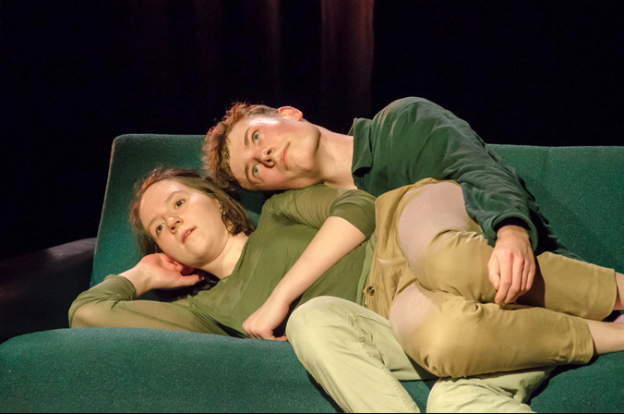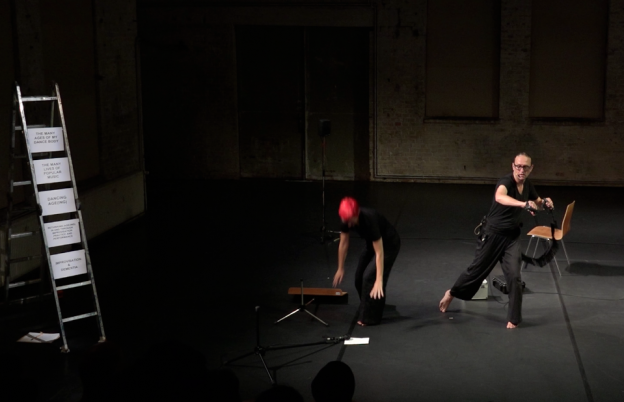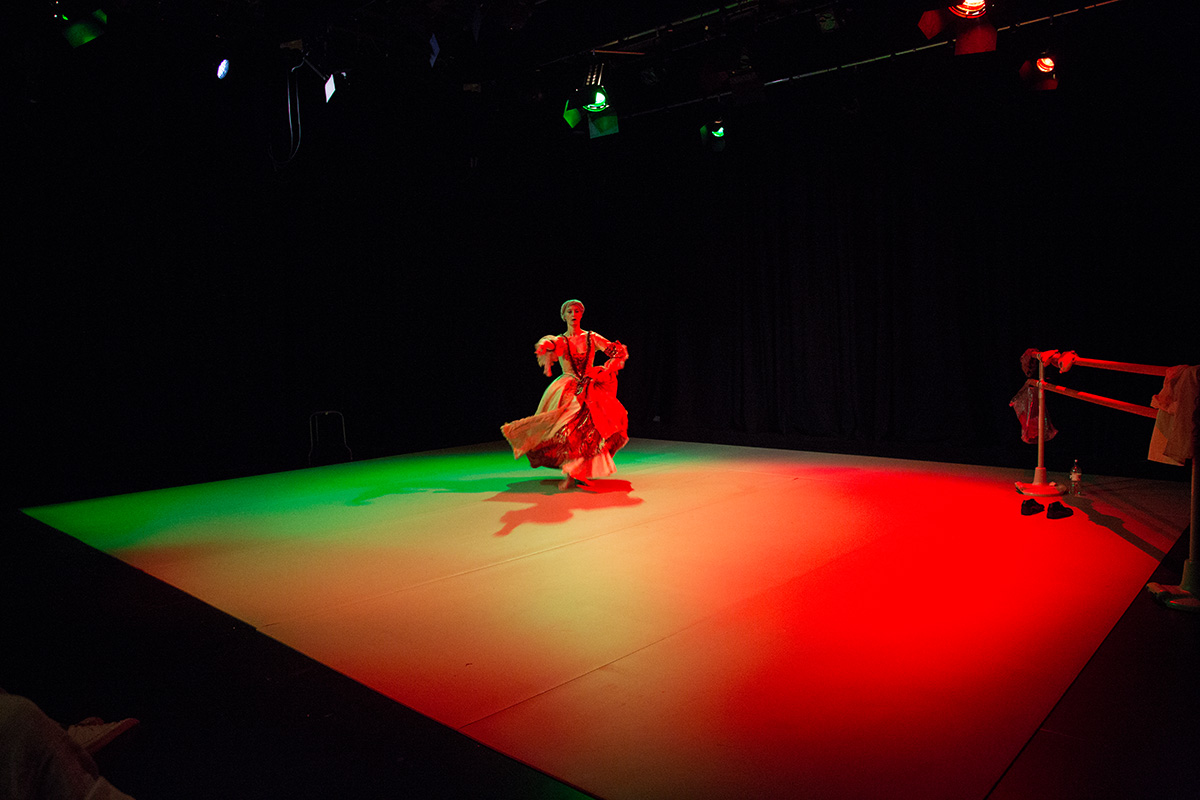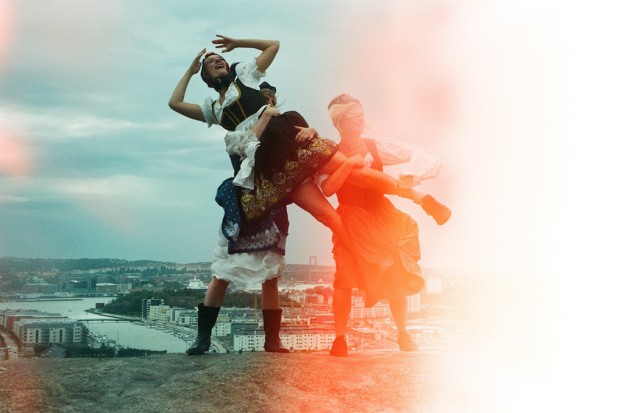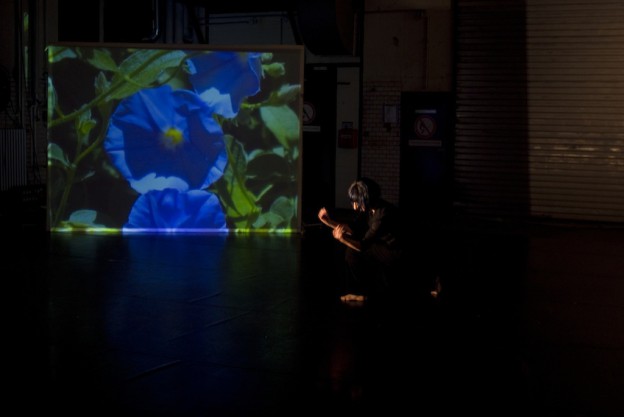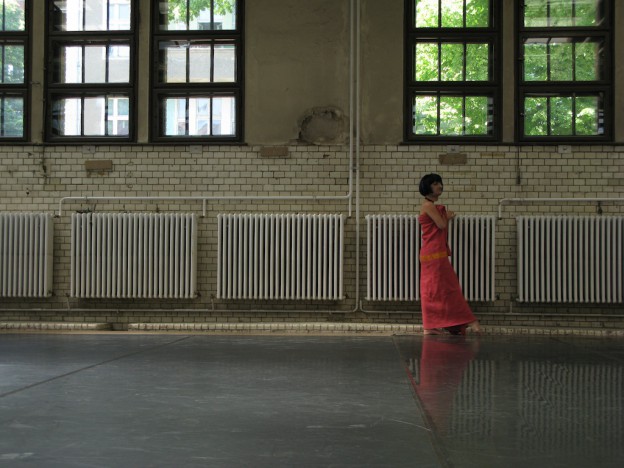Centre Français BerlinMit Susanne Martin und Jan Burkhardt Durch eine Mischung von Vortrag, Workshop und Performance widmen wir uns einigen zentralen Tanzthemen wie zum Beispiel: Wonach gucken wir, wenn wir Tanz sehen?Woran denken wir, wenn wir selbst tanzen?Wie verhält sich Tanz zu Ton und zu Musik?Was könnte man wissen und was will ich wissen über… Continue reading Was ist Tanz? Seniorenakademie SKAT, April 2022
Category:choreographies
Understanding Dance for Beginners and Intermediates, May 2020
This video tutorial (4 episodes) is a response to the statement “I don’t understand dance” – a sentence we encounter ever so often when moving away from the inner circles of dance lovers and dance experts. So, we attend to questions like: What do I look for when watching dance? What’s the relationship between dance,… Continue reading Understanding Dance for Beginners and Intermediates, May 2020
Learning. Teaching. Dancing. 2018
Learning. Teaching. Dancing.for “Remembering the Future – 40 years of Tanzfabrik Berlin”A “Doc Martin Dance Lecture“ with Susanne Martin (in English language)all Photos: AnnA Stein Learning. Teaching. Dancing. is an interactive dance lecture for beginners, professionals, and the generally curious. Within the frame of “Remembering the Future – 40 years of Tanzfabrik Berlin” this dance… Continue reading Learning. Teaching. Dancing. 2018
RETROPERSPEKTIVE 2017
Duet with Felix Marchand6 December 2017, SODA Festival, HZT Berlin Retroperspective It is ten years by now that Felix and Susanne became SODA-pilot-students at the Inter-University Centre for Dance Berlin (HZT). Ten years during which they didn’t find the time to go into the studio together. Now it finally happened. Come and celebrate with them… Continue reading RETROPERSPEKTIVE 2017
Von der Schönheit und Seltsamkeit des Anlehnens 2017
Photos: Etienne Girardet Lehnen, federn, fallen, berühren, ausstrecken, anschmiegen, ausklappen einsacken, hinfläzen, auftanken. // 8 junge Menschen, ein Sofa, viel Raum für Kontakt und für eigensinnige Versuche des Anlehnens und Abhebens. // Es entstehen schöne und seltsame Beziehungen zwischen Körper und Körper, zwischen Körper und Boden, Körper und Sofa, Körper und Raum. // VON DER SCHÖNHEIT UND SELTSAMKEIT DES ANLEHNENS ist… Continue reading Von der Schönheit und Seltsamkeit des Anlehnens 2017
Doctor D meets Doctor V 2016
Susanne Martin and Alex Nowitz Premiere: July 7, 2016, at festival Improvisation Xchange Berlin – berlin arts united at Dock 11, BerlinDuration: 60 min An interdisciplinary dialogue between two artistic research projects, one based in dance, the other in voice/live electronics(spoken language English)In this three-part performance Susanne Martin and Alex Nowitz each share, explain, and… Continue reading Doctor D meets Doctor V 2016
The Fountain of Age 2015
Photos W. Gillingham Sutton A Solo / Dance / Piece / Lecture / Performance / Research This solo performance constitutes one of two artistic outcomes I present as part of my PhD dissertation Dancing Age(ing) at Middlesex University London. Premiere: 18 June 2015, Ravensfield Theatre MIddlesex University LondonDuration: 40 minSupported by: Middlesex University London, Tanzfabrik… Continue reading The Fountain of Age 2015
The Fountain of Youth 2014
Photos Lars Åsling A solo/ dance/ piece/ lecture/ performance/ research by Susanne MartinDuration: 45 minGrove Theatre, Middlesex University London, November 2014 The Fountain of YouthIs a core part of my doctoral research in dance, dedicated to exploring and questioning dominant views on ageing dancing bodies through my own improvisation-based dance practice and performance making The… Continue reading The Fountain of Youth 2014
The Fountain of Youth & The Shadow 2013
Photos Lars Åsling, Graphic Sophie Jahnke The Shadow and The Fountain of Youth – Two Dances on Staying Alive As a new step in their long-term collaboration Bronja Novak Lindblad (Göteborg) & Susanne Martin (Berlin) have created each a solo on the same subject: the facts of getting older and sustaining in the world of… Continue reading The Fountain of Youth & The Shadow 2013
Hoppalappa Postfolki Tanzi Teateri 2008 – 2012
An improvisational performance project byKatarina Eriksson (San Francisco)Susanne Martin (Berlin)Bronja Novak Lindblad (Gothenburg)Coaching: Andrew MorrishProduction: Big WindSupported by: the city of Gothenburg and Statens Kulturråd The studio version:Sept. 2008, Konstepidemin Gothenburg The stage version:Premiered 23.5.2009, Atalante, GothenburgPerformance time: 75 minLight: Victor WendinTouring: Stockholm, Malmö, Berlin The site specific version:June 2012 in Gothenburg At the intersection… Continue reading Hoppalappa Postfolki Tanzi Teateri 2008 – 2012
Rosi tanzt Rosi – The Conference 2009
Concept and performance: Susanne MartinDramaturgy: Brenda WaiteMentoring: Andrew MorrishChoreographic support: Meagan O’SheaDuration: 45 min.Supported by: Hochschulübergreifendes Zentrum Tanz Berlin, Mimecentrum Berlin, Tanzfabrik BerlinPremiere: BAT Studiotheater Berlin July 2009Touring: Berlin, London, Plymouth and Granada (in Spanish language) Rosi tanzt Rosi – The Conference is a 45 min solo performance with three characters; with Rosi’s enigmatic choreographies… Continue reading Rosi tanzt Rosi – The Conference 2009
Rosi tanzt Rosi – The Winter Version 2009
Performances at Critical Path, Sydney and Lucy Guerin Studio, Melbourne in January 2009 during the residency at Critical Path, and as semester-presentation for MA SODA at HZT Berlin at Uferstudios Berlin “During her stay in Sydney and Melbourne she will work on her solo Rosi tanzt Rosi, dealing in it with the notion of narration… Continue reading Rosi tanzt Rosi – The Winter Version 2009
Rosi tanzt Rosi im Camper 2008
Tanznacht Berlin 2008
Rosi tanzt Rosi – The July/August Version 2008
Performances: July 2008 at Uferstudios Berlin as part of MA SODA research showings andAugust 2008 at HALLE Berlin as part of the International Dance Festival Tanz im AugustSupported by: HZT Berlin Rosi tanzt Rosi is a piece, a process, a movement towards a fictional character; it’s also my continuous research subject/object throughout my MA studies… Continue reading Rosi tanzt Rosi – The July/August Version 2008
Rosi tanzt Rosi 2008
SoloDuration: 10 min.Performances: 3./ 4. Jan. 2008 at Sophiensaele Berlin during the festival Tanztage 2008Supported by: HZT Berlin „Ist das nicht ein bisschen…….?“„Aber die Leute lieben sie“„Irgendwann muss doch mal Schluss sein …. Du hast schon den Artikel gelesen……? (…) und zeugt ihr Tun eigentlich von einem fortschreitenden Realitätsverlust oder eher von selbstbewusst zukunftsweisender Verschiebung… Continue reading Rosi tanzt Rosi 2008
JULIO (2006)
A piece about longing, ageing and the music of Julio Iglesias JULIO is a patchwork project. It has been presented internationally in different versions and lengths. The two solos can also stand for themselves and have been performed independently. The group version with guest lecturer and singer is at the moment only available in German… Continue reading JULIO (2006)
Golden Playa (2006)
A film by Andrea Keiz and Susanne Martin, 17 minspoken language: German, with English and Spanish subtitles In this documentary film (arty as well) I wanted to give the word to the old themselves. With the video artist Andrea Keiz I spent two weeks during winter season in a typical “German” hotel in Mallorca, contacting… Continue reading Golden Playa (2006)
Die Eigentümlichkeit, der Exhibitionismus und die Damen von Welt 2005
by Susanne Martin and Bronja Novak75 min. In English and Swedish language, also possible in German/English and English/English Premiere: 2005 at Atalante Gothenburg, SwedenSupported by: Statenskulturråd, Göteborgstads Kultur, Folkuniversitetet Performances: Gothenburg, Stockholm, Malmö, and in many many other Swedish cities, Berlin, Potsdam, Brunswick (USA), Chisinau (Moldova). To make a special evening an unforgettable one, Mesdames… Continue reading Die Eigentümlichkeit, der Exhibitionismus und die Damen von Welt 2005



